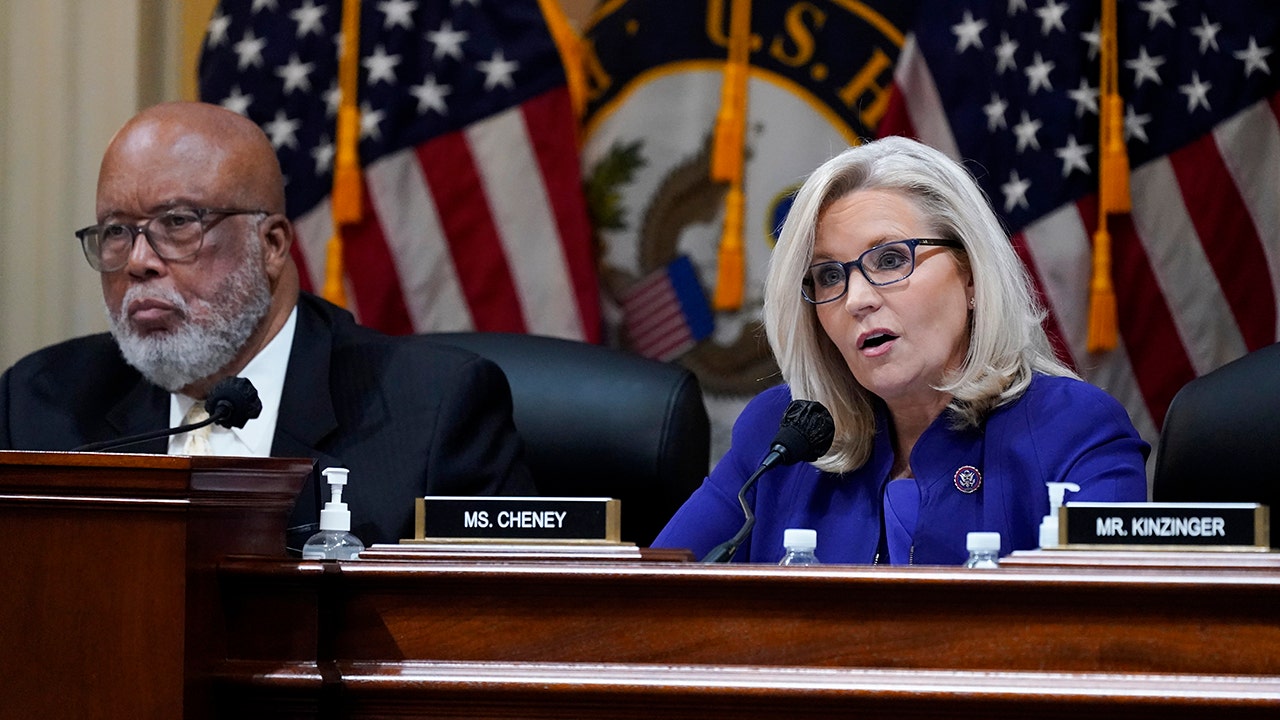In the month-and-change following Vice President Kamala Harris’ loss to Donald Trump, Democrats have begun a difficult conversation over what exactly went wrong and how the party should move forward. How did it come to pass that the party lost both the popular and Electoral College vote to a twice-impeached former president who attempted a coup and was convicted of 34 felonies?
The response from Democrats is decidedly different than after their 2016 loss. There is no Russia collusion scandal to blame. No last-minute letter from James Comey implicating their nominee. No Electoral College to blame. Trump won a clean victory — even if the election was quite close.
Following Trump’s first win, the impulse was to understand how people could vote for him in the first place. Who were these rural, non-college-educated white voters, and what made them so mad? A raft of books, first among them Vice President-elect JD Vance’s “Hillbilly Elegy,” came to populate the New York Times bestseller list. Reporters took frequent safaris from their perches in New York and Washington out to the foreign environs of Trump Country to interview their mysterious fellow Americans at diners to learn their particular folkways.
None of this is happening this time. Instead of asking what’s the matter with Kansas, the question heading into 2025 is what’s the matter with Democrats.
Various factions within the party have already put forth a litany of answers: This was just about inflation and not a repudiation of the party writ large. Or, the fault lies at the feet of the left-wing special interest groups, in particular those pushing identity politics, that party leaders refused to dismiss. No, others say: The party is really too beholden to billionaires, big donors and corporations and shunted aside populist economic messaging and policies to appease them. Nope, still more say: The party is doomed so long as it mostly appeals to the educated upper-middle class while bleeding working-class and non-college-educated voters.
These arguments all propose different courses of action for the party going forward. But beyond the political and policy implications in each critique lies a question of what past conditions they seek to respond to. And these questions fall into three distinct categories:
President Joe Biden, former President Barack Obama, and Vice President Kamala Harris arrive for an event at the White House. via Associated Press
Should party leaders only concern themselves with what went wrong in this election, look to other elections in the Trump Era, or consider taking a longer look at the party’s electoral situation? How much should they rend their garments — or should they rend at all?
Which question, or combination of questions, Democrats prioritize from here will be telling.
Was It Just This One Election?
Perhaps the easiest thing for Democrats to do is nothing.
The case for this begins with noting that this election was extremely close. As the vote currently stands before certification, Trump leads Harris by under 1.5% in the popular vote. Excluding the two popular vote-vs.-Electoral College splits in 2000 and 2016, that’s the closest popular vote margin since Richard Nixon beat Hubert Humphrey in 1968. In the Electoral College, the race was decided by a little less than 231,000 votes in three states: Michigan, Pennsylvania and Wisconsin. That margin is wider than Trump’s was in those states in 2016 and Biden’s in 2020, but not insurmountable.
“The glass is half full. It was close. If we get another 2% or 3% of American voters, it would have successfully led to victories from the presidency on down,” Colorado Gov. Jared Polis, a Democrat, told The Associated Press.
There were also particular conditions that made this election particularly difficult for Democrats — what political scientists would call the fundamentals of the election. Biden was extremely unpopular. People generally hated the economy. Inflation for food and gas exploded at higher rates than in anyone’s lifetime. And while gas prices went down, food prices, for the most part, remain higher than before.
“Look, at a certain level, when 70% of the country thinks the economy is bad and, by equal measure, 70% think the country’s headed in the wrong direction, that is a structural equation for an anti-incumbent election,” Rahm Emanuel, U.S. ambassador to Japan and a potential candidate to lead the Democratic National Committee, said on Ezra Klein’s podcast in early December.
Indeed, voters around the world exhibited anti-incumbent tendencies as ruling parties were routed in recent post-COVID elections in the U.K., Japan, Germany, France, South Africa, Argentina, South Korea, India, and so on. Only a few countries — Mexico and Spain, for example — escaped this anti-incumbent wave.
So, the argument goes, maybe Democrats don’t need to change much (except not run an unpopular incumbent president, or his vice president, during what people feel and perceive as economic malaise). Trump will take office and the pendulum will swing back in Democrats’ favor. Thermostatic opinion being what it is, they reckon, the electorate will turn against the incumbent party and give Democrats big midterm wins to hand them control of Congress and give a leg up in the next presidential race where Trump will not be running.
Perhaps the party could change its communications strategy — reach out to new audiences on alternative media or create its own new platforms to reach young men.
In these polarized and closely divided times, this thinking suggests, Democrats can win back control by just letting nature take its course.
Was the post-2012 progressive turn misguided?
The opinion that 2024 was only about 2024 revolves largely around structural forces — anti-incumbency, high inflation — and Biden’s unpopularity. But Harris was the Democratic candidate on the ballot, not Biden, and she was the one who lost.

A protester holds up a banner as a guest beside her reaches to pull it away as then-President Barack Obama speaks on immigration reform at the Copernicus Community Center on Nov. 25, 2014, in Chicago. MANDEL NGAN/AFP via Getty Images
Harris ran a moderate campaign focused on turning out suburban voters and flipping Republicans. She talked about small business entrepreneurship, promised to build the “most lethal” military in the world and almost entirely avoided discussion of her racial and gender identity. And yet she still got pilloried by the Trump campaign as an avatar of far-left cultural issues.
“Kamala Harris is for they/them. President Trump is for you,” one of Trump’s most-aired TV ads stated.
That ad focused on comments Harris made during her failed 2020 primary campaign for the Democratic presidential nomination where she endorsed government-paid surgeries for transgender prison inmates, including those in immigrant detention.(This was already the policy of the federal government at the time.)
“I made sure that they changed the policy in the state of California so that every transgender inmate in the prison system would have access to the medical care that they desired and need,” Harris told the founding director of the National Center for Transgender Equality Action Fund in a 2019 interview.
Since Harris’ loss, pundits and politicians have sought to pin the blame on “wokeness,” identity politics and the Democratic embrace of left-wing cultural stances on trans issues, immigration, and crime and policing that are not supported by a large number of Americans.
While few politicians have actually gone out of their way to break from consensus party positions here — Rep. Seth Moulton (D-Mass.), who has said that he doesn’t want his “two little girls … getting run over on a playing field by a male or formerly male athlete,” being the main one — this has spawned a debate over the power of “the groups” within the party.
“The groups” refers to the paraparty blob of nonprofit advocacy organizations — from Planned Parenthood to the Human Rights Campaign to environmental groups and immigrant advocacy groups — that operate as representatives of Democratic Party coalition partners or of issues central to the party. The argument here is that these groups have, in recent years, pressured cowed Democratic Party politicians to endorse their supposedly unpopular demands, whether it be on trans rights, defunding police, reduced immigration enforcement, and so on.
Democrats need to “declar[e] independence from liberal and progressive interest groups that prevent Democrats from thinking clearly about how to win,” Adam Jentleson, former chief of staff to Sen. John Fetterman (D-Pa.), wrote in a New York Times op-ed.
The groups “impose the rigid mores and vocabulary of college-educated elites” that prevent Democrats from competing up and down the ticket, Jentleson writes.
The current debate over the progressive groups in the Democratic coalition traces their power to the 2010s, when they began a shift decidedly to the left amid what Vox’s Andrew Prokop calls “the rise of new protest movements and social media” and the discrediting of “establishment Democrats’ approach” following Trump’s first win. But the push-and-pull of interest groups versus an establishment consensus isn’t new for Democrats.
Ever since Franklin Delano Roosevelt’s presidency, the party has been a mish-mash of interest groups that are often at cross-purposes. The rise of identity groups, often seen as more leftist, as key players in the party led to challenging efforts at coalition management as the party’s electoral struggles intensified in the 1970s. A movement of younger moderate Democrats, including Colorado Sen. Gary Hart and former President Bill Clinton and the Clinton-led Democratic Leadership Council, vocally criticized the “special interests” — unions and Black advocacy groups — in the 1980s and 1990s.

Members of the Sunrise Movement hold a banner while protesting near the White House on June 4, 2021. Shuran Huang/Bloomberg via Getty Images
Except this time around, it was the moderate mainline of the party that brought these identity politics to the fore. It was Hillary Clinton, after all, who deployed “woke” identity politics as a weapon to beat back Sen. Bernie Sanders’ (I-Vt.) primary challenge from the economic left in 2016.
“If we broke up the big banks tomorrow … would that end racism? Would that end sexism? Would that end discrimination against the LGBT community? Would that make people feel more welcoming to immigrants overnight?” Clinton said at a rally in 2016.
This mode of politics became even more pronounced amid Trump’s belligerent attacks on racial minority groups during that campaign and while in office, and accelerated after the murder of George Floyd at the height of the COVID-19 pandemic.
Much of this partywide turn flowed from Democrats’ growing belief post-2012 that “demography is destiny” after Barack Obama won reelection that year on the back of a multiracial coalition. Some Democratic consultants and political actors argued that the party should not chase white swing voters, but instead focus on base mobilization of its multiracial coalition.
Progressive activists argued that “the party could make big gains by a strategy that mobilizes progressives, rather than continuously undermining their base” by reaching out to white swing voters, Sean McElwee, then the head of the progressive polling firm Data For Progress, and progressive activist Tory Gavito wrote in 2019.
Some of those who buy into this as a core problem propose that Democrats should no longer acquiesce to left-wing cultural appeals, no matter the pressure they face, and instead return to the majoritarian politics that helped Obama and Bill Clinton win two terms in office each. But others note that those very politics Democrats are now told to reject are a direct result of the Obama and Clinton eras’ strategies of reorientation towards white-collar professionals.
There might be an even larger problem.
What does — or should — a truly national coalition look like in a new era?
The existential angst that appears to be gripping Democrats in the wake of their loss to Trump may appear odd if you only look to the factors of the 2024 election, or to the cultural changes of the 2010s. In that view, some small or medium-sized changes can be made, and Democrats will be back in the White House with slim majorities in the House and Senate in no time. But the party doesn’t need a full reboot.
What these views don’t take into account is a plan for how Democrats can build a sustainable majority that competes across the country. What kind of politics is needed to finally break the stalemate that has afflicted the country since the year 2000? To compete up and down the ballot beyond the Blue redoubts and the shrinking number of swing states that have defined politics since the turn of the millennium?
A return to Clintonism or Obamaism won’t do the trick. Just look at what happened in their wake.
Under Clinton, Democrats lost the House for the first time in 40 years and the Senate, save for the brief period where Vermont Sen. Jim Jeffords switched parties, from 1995-2007. Clinton’s heir, Vice President Al Gore, lost the 2000 election. More importantly, he lost long-held Democratic states like West Virginia and states Clinton won in the South that have since stayed in the Republican column.
While Obama flipped some states back in 2008 and 2012, he also presided over historic House and Senate losses, and massive wipeouts at the state and local levels. Like Bill Clinton, his chosen successor, Hillary Clinton, lost the next election by failing to hold states Democrats had won for decades. And perhaps more importantly, the party’s brand became viewed as toxic in too many states to win the kind of majorities needed to actually break the stalemate.

President-elect Donald Trump increased his support among non-college-educated Black and Latino voters to propel himself to a second term. Doug Mills-Pool via Getty Images
Both Clinton and Obama presided over political projects that shifted the party’s base from the non-college-educated working class to higher-wage, college-educated voters. They were both still able to hold on to significant shares of non-college-educated white voters through a combination of tailored policy appeals, inclusive narratives and personal charisma. But the end result of their presidencies is a party that increasingly appeals to urban and suburban college-educated voters — at the cost of what had been their base.
Democrats hoped that a coalition of these college-educated voters and racial minorities of all educational attainment could propel the party to majority status. This was the thinking behind Sen. Chuck Schumer’s (D-N.Y.) line in 2016: “For every blue-collar Democrat we lose in western Pennsylvania, we will pick up two moderate Republicans in the suburbs in Philadelphia.” But Trump’s 2024 inroads with Latinos, Blacks and Asians — particularly those without college educations — demolished that hope.
“Democrats’ losses among working-class (noncollege) voters were not distributed equally across demographic groups,” Jared Abbott, director of the Center for Working-Class Politics, a research group studying working-class voters, wrote following the 2024 election. “Indeed, though Harris suffered a small loss of working-class white support, dropping from Biden’s 37% to 34%, her support among non-white working-class voters fell by nearly three times as much.”
Since nearly two-thirds of the U.S. population does not have a college or graduate degree, according to the Census Bureau, a party that can only reliably depend on college-educated voters can’t build a sustainable majority. College-educated voters may turn out at higher rates in midterm elections, but, as we saw in 2024, they were swamped by low-propensity voters. It’s like building a house too close to the ocean. It’s nice when the tide is low, but you’ll get swept out to sea if there’s a surge.
This class dealignment — the movement of working-class voters from the parties that traditionally represented their material interests — is a feature of politics across Europe in the 21st century, as well as the U.S. and Canada. The fact that it spread in 2024 beyond white voters in the U.S. to racial minority groups, as proven by the election results in counties and precincts with large nonwhite working-class populations, is the latest sign that it is accelerating.
This is where the existential angst comes in. And no one has a great answer for how to reverse this trend.
There are efforts to do so that come from different factions and ideological angles. What many of these projects share in common with those looking at the influence of the Trump Era, is a rejection of “the groups.” Where they differ is in how they propose Democrats move beyond that to create a politics rooted in economic appeals.
Ruy Teixeira, a moderate Democrat, pronounced that the “progressive movement is over” after the election, calling for the party to reject “radical” cultural stances and instead emphasize economic differences with Republicans.
Similarly, the Center for Working-Class Politics, which situates itself on the economic left, called on Democrats to “adopt a class theory of politics,” recruit working-class candidates, expand labor unions and ignore pressure to take “incredibly unpopular maximalist stances” pushed by “the shadow party” groups.
These two sides may disagree on what economic appeals Democrats should make in terms of policy and rhetoric, but they agree that the over-identification with a politics that seems to mostly appeal to the college-educated is a dead end and that an appeal based on economics is the only way the party can build a majority.
Whether it’s possible to make this turn, as Trump provokes a reaction on these very issues, however, remains to be seen.













